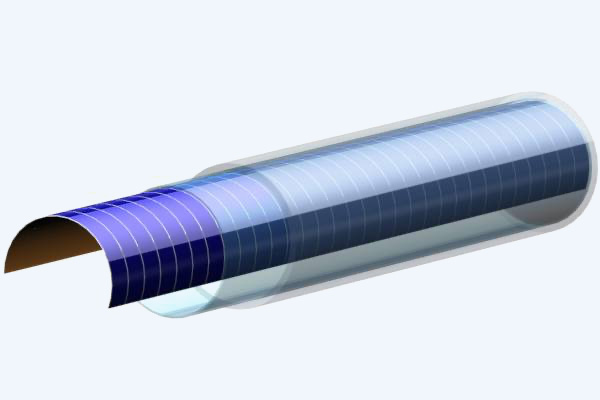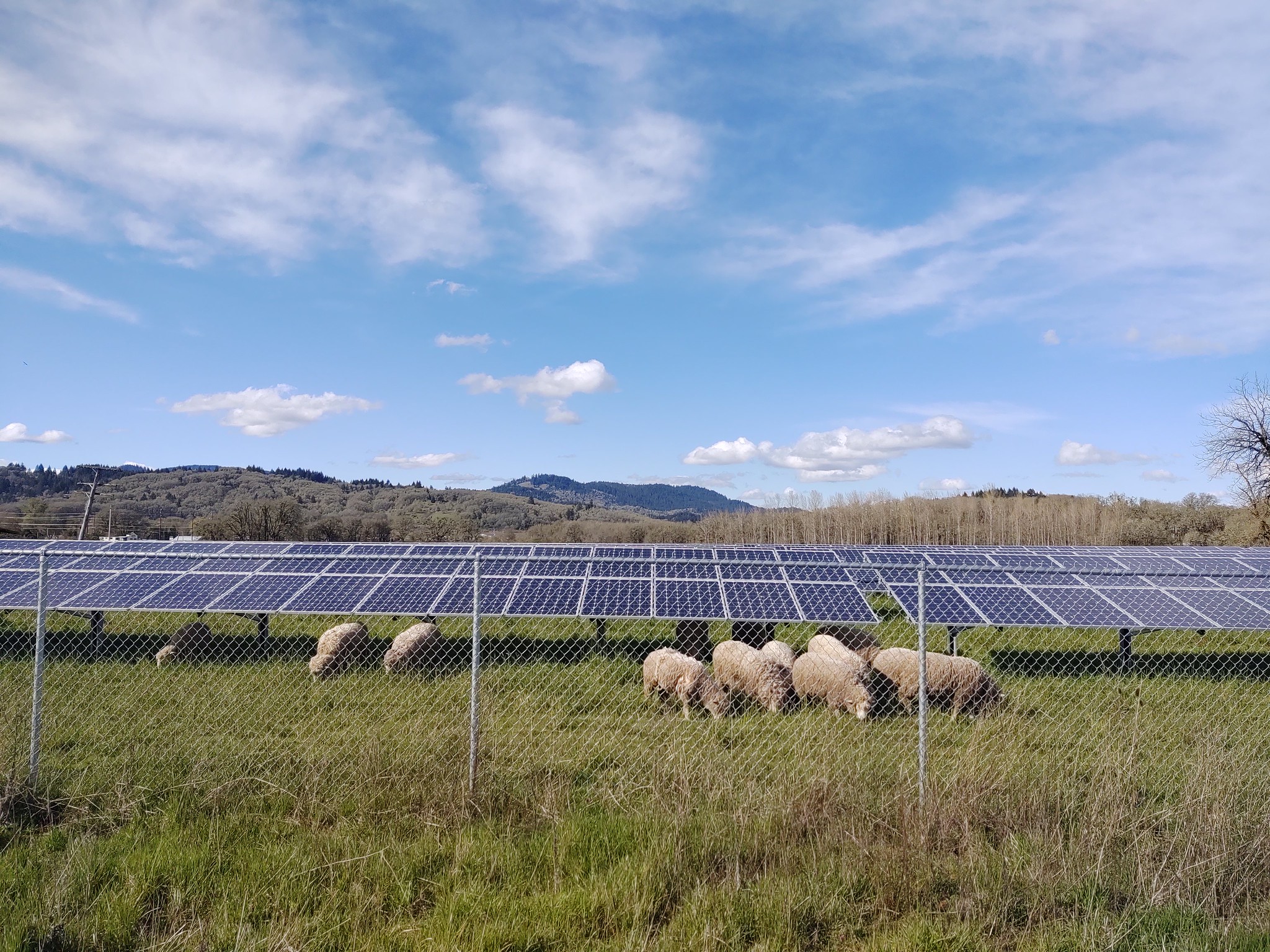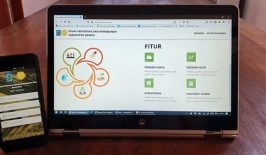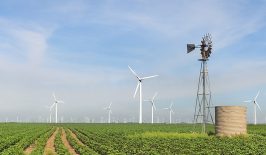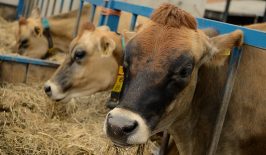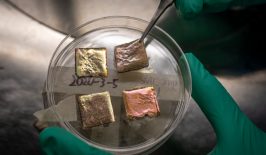These days, wanderers on pleasant rural strolls may encounter more than just crops and grazing animals in farmers’ fields. Increasingly, traditional agricultural land is also being turned into the next generation of large scale solar farms. Of course, although this is good for renewable energy generation, it does come with some potential downsides. Most notably, a field filled with solar panels cannot be filled with as many crops or animals. Bridging this dichotomy is the job of the emerging concept of agrovoltiacs.
Tubesolar is a German agrovoltaic developer looking to provide farmers with the best of both worlds. They have developed a tubular photovoltaic system which can be built over existing crops and may even increase crop yield. Within their system, flexible PV strips in glass tubes are arranged in a lattice and positioned above crops or other objects. The tubular nature of the structure means light, water and air can still reach the crops below, while still generating electricity. According to Tubesolar, their system generates around the same amount of power as traditional panels – roughly 1MW per hectare.
Their design, produced in conjunction with phototronics company Osram, also comes with additional benefits. The tubes can be arranged at variable heights, allowing space below for harvesting and other work. The tubular nature of the photovoltaics also means they can be constructed from lightweight materials aiding in construction, cost and logistics. Their curved surface also provides for self-cleaning, reducing labour requirements compared to conventional panels.
The tubular panels can even help the plants themselves. They provide cooling shade, which can be useful in arid environments, as well as limiting solar radiation. Furthermore, they can also protect crops from heavy rain, hail or bird damage. Tubesolar claim all of these benefits combine to reduce surface erosion, preserve water and prevent desertification – all while generating clean renewable energy.
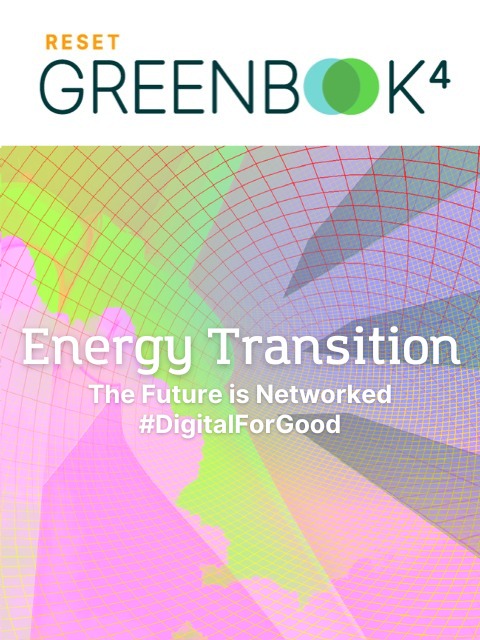
The 1.5 degree target is unattainable without a real transformation of our energy system. But how can it succeed? What are the energy sources of the future? What digital solutions are ready and where are innovations needed? And how can the transformation be driven forward?
The RESET Greenbook “Energy Transition – The Future is Networked” presents digital, innovative solutions and sheds light on the background.
The Pros and Cons of Agrovoltaics
When it comes to building large solar parks, location is perhaps more important than first meets the eye. It’s not simply a case of building a park in a sunny field, other environmental conditions have to be right to ensure high levels of efficiency. In many cases, an overly hot area can actually decrease solar panel efficiency.
It’s for this reason that agricultural fields have become prime real estate for solar developments. Agriculture is generally developed in moist areas, resulting in a cooling vapour that increases solar panel efficiency. Furthermore, farmers’ fields are usually wide, open and devoid of solar ray block structures, making them even more ideal. The potential for energy generation are huge. One study estimated that covering less than one percent of the world’s agricultural land with conventional solar arrays could generate all the world’s present electricity demands – if ideal conditions are assumed.
But large scale solar developments in rural areas naturally leads to concerns food production would be impacted. This is even more critical considering growing populations and increased food demands in the future. However, studies have shown that the addition of solar panels can in some cases increase yield. One 2016 study, reported that agrovoltaic farms planting shade-resistant crops enjoyed a 30 percent higher economic value than conventional farms. This is likely due to the micro-climate produced by the panels which can aid some summer crops. The addition of panels can also reduce water evaporation, saving on the amount of water needed for irrigation. Solar panels also have little impact on grazing animals, and can also provide areas of shade and shelter.
However, there are also substantial downsides. Only certain shade resistant crops, such as cucumbers and lettuces, will be positively impacted. In general, these only form a small percentage of arable production. Wheat, for example, requires direct sunlight and is a poor candidate for agrovoltaics. Solar panels also likely increase humidity and the potential for disease to spread, as well as using up space. Other studies have found that more innovative agrovoltaic designs, such as greenhouses, do significantly impact yields. In one case, greenhouses with half the roof covered in panels experienced a 64 percent drop in crop yield, and an 84 percent drop in energy generation.
There are also issues with cost. Agrovoltaic designs positioned over crops come with additional costs in construction, as well as increased insurance costs due to the likelihood of damage. Farmers may also find themselves increasingly called upon to fix complex machinery, or call in professionals. As a result, in many countries, agrovoltaics would simply not be economically viable for farmers, especially if government grants and subsidies are not available.

